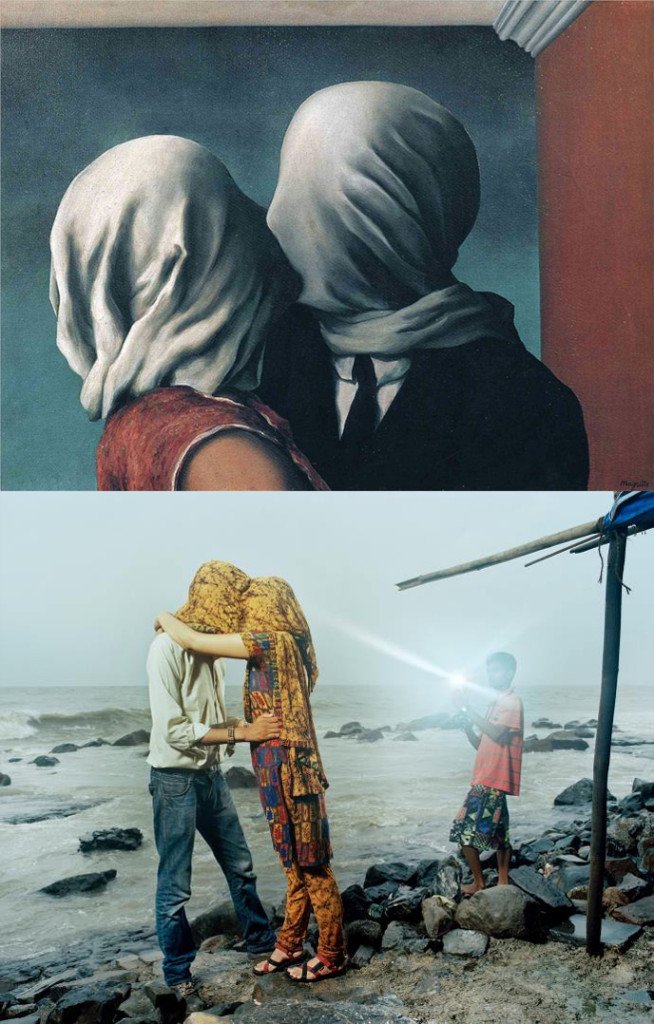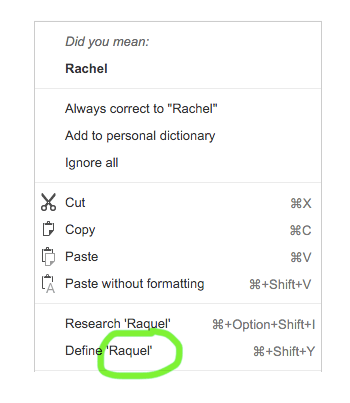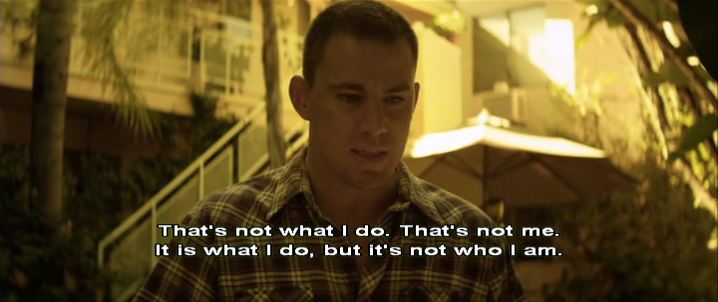Just get back to that time where you were just tripping out in college and wondering what else is out there, before you buttoned up. Because our late-night sessions on the internet do not look rational. Look at those autofill Google searches. It’s like, “Why am I so lonely?” “Does God hate me.” The questions are not, like, “How tall is the Empire State Building?”
the science of bad movies
Nora Caplan-Bricker:
The ideal bedtime story, according to Nitun Verma, a national spokesperson for the American Academy of Sleep Medicine, is one that “doesn’t build upon itself,” like a movie “with a lot of parallel stories that don’t connect at the end.”
From The Podcast That Tells Ingeniously Boring Bedtime Stories To Help You Fall Asleep
A real-life driving game
A game: the more distance you keep from other cars on the freeway while adhering to the speed limits, the more points you earn. With networked vehicles reporting data, you can compete against your friends, anonymous neighbors, etc. Higher points (less breaking) could equal rewards at businesses from drive-through restaurants to gas stations.
A hypothesis: if this game became popular, freeway traffic would flow more smoothly, average speeds would increase and there would be less crashes as well as the resulting jams; all without the need of self-driving vehicles.
Equeibol
You know it’s 2016 when these are just a few of your options to represent…
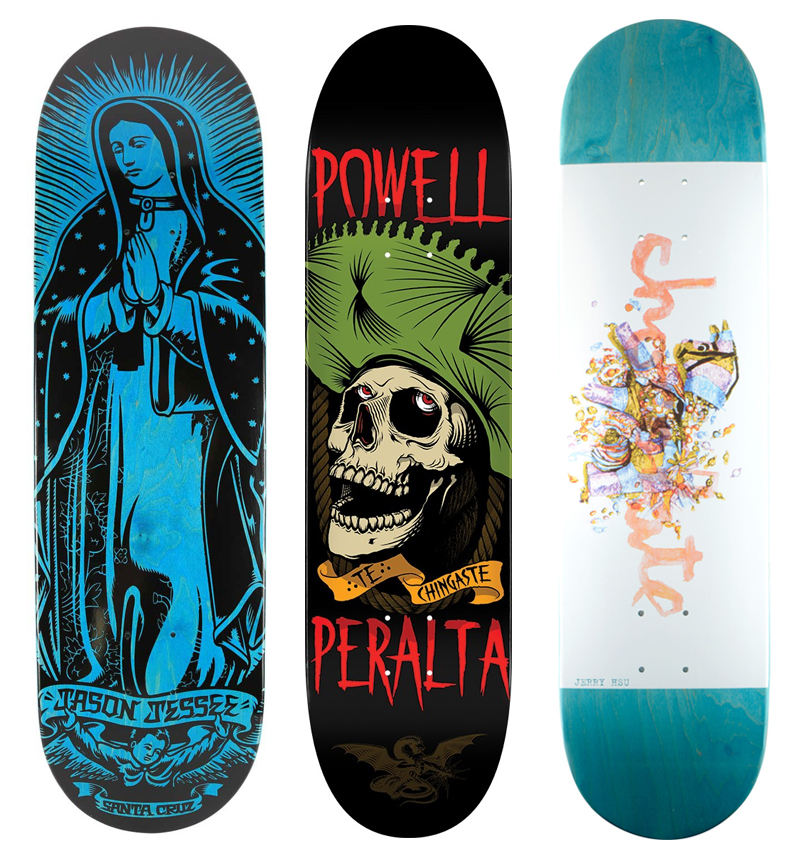
in the long tradition of Elguera, Rodriguez, Alva, Caballero, Guerrero and Gonzalez. Etc.
maximum efficiency, minimum effort
As Clinton and her team certainly anticipated, hitting him hard as mentally unstable and unfit for the presidency has placed Trump in a sort of Chinese finger puzzle of his own creation. The only mode of response he knows – an escalating and bellicose round of personal attacks with increasingly hyperbolic accusations – only confirms Clinton’s diagnosis. The harder he fights the tighter the charge sticks.
postscript november 13
The charge is a detriment in front of some audiences and a badge of honor among others.
Young Americans, old Americans
This election isn’t just a fight over tax plans and health care; it’s a contest—a brawl, even—over questions of national identity. Just who is the United States for? Just whom do we mean when we say “Americans?” On one side, we have immigrants, religious minorities, and the descendants of slaves, some disadvantaged, some on the upswing, but each committed to inclusion. On the other, we have an angry and frustrated white minority that’s perhaps still potent enough to win the White House.
A very popular movie on how the terrorists win
A group of terrorists attempts to steal a weapon of mass destruction by driving a truck through the gates of a government compound in the capital city of an African nation.
The terrorists are stopped by a special forces team led by a legendary American soldier. The leader of the terrorists vows revenge against the American and detonates a suicide vest. But the explosion is deflected, becoming an airborne projectile which rips through a nearby office building, killing innocents.
In this opening sequence from “Captain America: Civil War”, the filmmakers evoke the 1983 Beirut barracks bombings, the 1998 US Embassy bombings in Kenya and Tanzania, the rationale for the invasion of Iraq as well as the destruction of the World Trade Center in 2001.
While “Civil War” may not be a great or lasting movie, it exploits our recent political history in an attempt to dramatize an important claim.
When Captain America was first created over 70 years ago, his first public act was to punch Adolf Hitler in the face. In “Civil War”, there are no Islamic mujahideen, no falsified evidence of WMD, no oil-rich monarchies nor power-hungry neocons.
Instead, the movie’s villain is a man who lost his wife, son and father as casualties of righteous American imperialism; an ordinary soldier from a failed state who is hell-bent on revenge. His motivation echoes the movie’s stated premise, presented convincingly by a grieving employee of the U.S. State Department: what is the difference between avenging and revenging? between violence in the service of justice and violence in the service of emotional satisifaction?
While the titular hero is proven right in defending unilateralism – by acting against the wishes of the United Nations, Captain America finds a cache of WMD – his is a hollow victory. The WMD have been “deactivated”; they were a ruse to turn the Americans against themselves.
In the end, “Civil War” is unwilling to state its case as clearly as the movie “War Games” did in 1983 – “the only winning move is not to play” – but that it questions our ability to fight terrorism is significant. Can America respond rationally in the face of an emotional provocation?
I hope its fans clamor for an answer.
Ghost in the Shell
Emily Yoshida makes a subtle argument for the changing political context of art:
Japanese audiences, unlike American audiences, don’t understand Motoko to be a Japanese character, just because she speaks Japanese and has a Japanese name. This speaks to the racial mystery zone that so much anime exists in…
Of course, it’s a different issue for Japanese Americans… For us, anime is something from our country, or our parents’ country, that was cool enough for white kids to get into just as fervently.
In summary: Japanese artists chose to draw protagonists with non-Japanese features. Said characters became popular in the U.S. where they are treated as Japanese characters. Should the actors chosen to portray those characters represent how they were received or how they were conceived? If both conditions cannot be satisfied, which audience is more important?
the nadir in “midnight run”
In the first image, the protagonist is defeated.
He faces away from us, towards the past. The road ahead of him is indirect and would take him away from us. He is pushed up against an enormous wall. There is no exit. The scene is clear as day.
And then, in the very next shot, a door that reads “Closed” opens, and the protagonist enters, facing us. The diagonal of the road is replaced by the diagonal of the counter which leads him towards us – away from the shadows and towards a warm light.
In this scene, he will be redeemed.
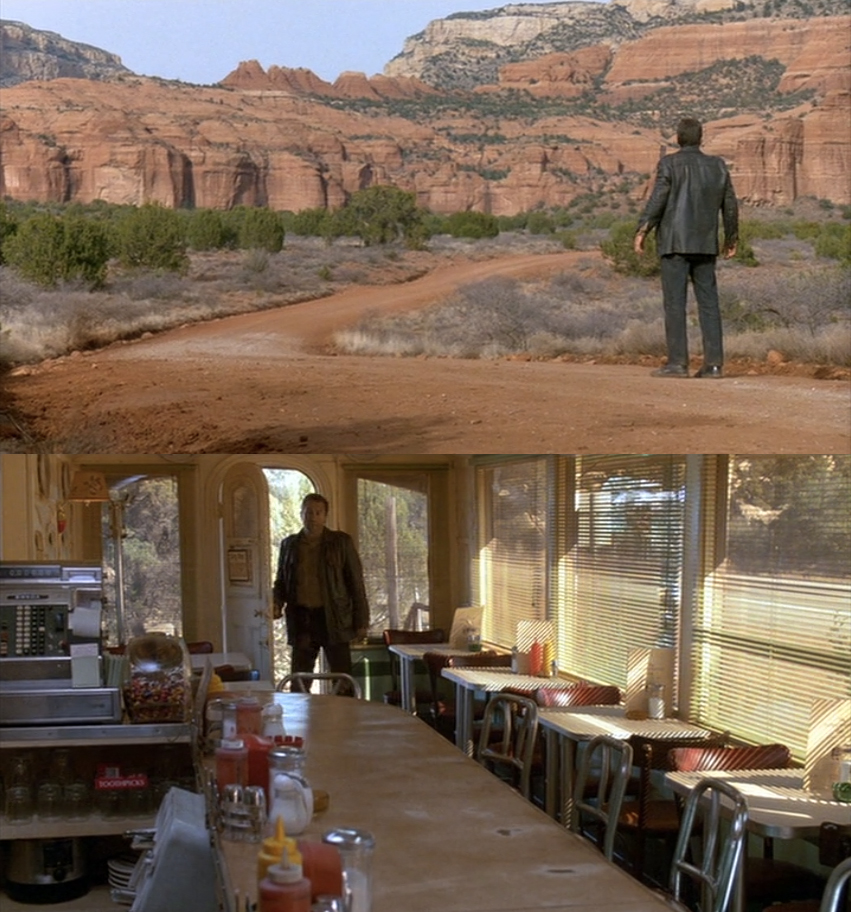
From the superb movie “Midnight Run“.
beside the lake, beneath the trees
Urban environments can certainly elicit involuntary attention… but they do so in a harsh, peremptory way that requires voluntary attention to override. Natural environments, on the other hand, provide what Berman calls “softly fascinating stimulation.” Your eye is captured by the shape of a branch, a ripple in the water; your mind follows.
the cruel myth of the rugged individual
In other words, it may simply be the case that many people who lived in less equal, more “traditional” times were forced into close companionship with a lot of other people, and that this shielded them from certain psychological problems, whatever else was going on in their lives.“I often think about my grandmother on my mother’s side, who ran a farm in rural Minnesota with my grandfather,” said Twenge. “They had seven children, and they had to get up at five o’clock every day to milk the cows. My uncle tells me stories about her pushing a plow and stopping to barf because she was pregnant so many times.” It was a tough life, in other words, but: “She was always surrounded by people — not just her immediate family, but she had extended families, brothers and sisters, living in the farms around her. She was virtually never alone — and that can be a bad thing, clearly, but from a mental health perspective being surrounded by people is a good thing.”
meanwhile:

Relics
A crowd formed around the notorious gangster’s lifeless body, and several people dabbed handkerchiefs into his blood for souvenirs.
special interests
Luke Harding on findings in the Panama Papers:
There is no explanation in the files of why the banks agreed to extend such unorthodox credit lines.
Some of the cash obtained from RCB was also lent back onshore in Russia at extremely high interest rates, with the resulting profits siphoned off to secret Swiss accounts.
Truly the best way to rob a bank!
Aliens, terminators, replicants
At its best, science fiction operates as the articulation of outlandish metaphors, even puns.
Werk
“Se Vale Soñar” by Juan Cierro
My own hasty translation of the lyrics:
I wish that when it rained
instead of water, cocaine fell
that beer would run along with tequila
through the rivers and to the sea
That in the gardens
instead of flowers,
carnations and lilies
Marijuana plants, coca and opium –
how pretty!
There would be no cartels
Much less mafia types
Mother nature would
take care of us
making sure we’re happy
Drunk and out of our minds
Things would be so great
if the shitty government didn’t exist
We would live more comfortably
without coveting what’s not ours
It would be so cool
To have the cat’s seven lives
So I could get into a shootout
with the gangbangers and hitmen
But God doesn’t make daydreams come true
Nor does He heal the lame
All I can do is be happy with what He’s given me
It’s important to dream my brother
I don’t think that’s a sin
Quisiera que cuando llueva
En vez de agua, cayera perico
Y que corriera cerveza,
Tequila por mar y ríos
Que en los jardines hubiera
En vez de flores, claveles o lirios
Matitas de marihuana,
Coca y opio, ¡Qué bonito!
Los carteles no existieran
Mucho menos los mafiosos
La madre naturaleza
Se encargaría de nosotros
De tenernos bien contentos
Todos borrachos y locos
Estuviera a toda madre
Que no existiera el perro Gobierno
Viviéramos más a gusto
Sin amantes de lo ajeno
También fuera una chulada
Tener las siete vidas del gato
Para agarrarme a balazos
Con los chotas y soldados
Pero Dios no cumple antojos
Ni endereza jorobados
Solo queda conformarme
Con todo lo que me ha dado
Se vale soñar pariente
No creo que eso sea pecado
